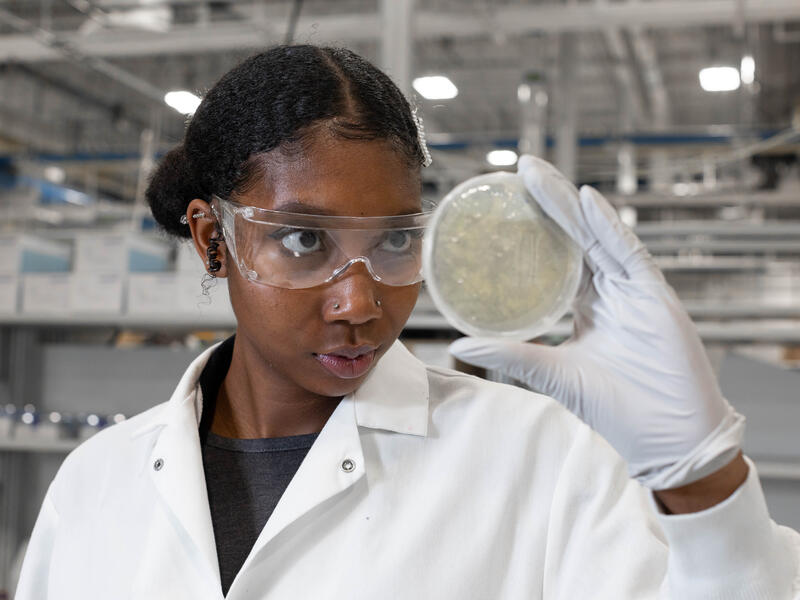Shantelia Shook is feeling bittersweet.
She’s a student in SPUR, or the Sanford Program for Undergraduate Research. Sadly, the 2021 program is nearing its end.
However, if she didn’t have a heart for research before the program, she certainly does now.
What’s SPUR?
Shook, a soon-to-be senior at Dordt University, explained that the program is geared toward college students.
“This program is a great way to see what graduate school would be like,” she said.
The program is unique because it offers students hands-on experience in a laboratory setting. Students are given a project and paired up with a professional lab team, and personal mentor.
“You could be doing cancer research, biochemistry, or whatever it is the lab is studying. They show you how to think like a researcher, not just showing you the lab,” she said.
A fight against cancer
Shook said one of the main reasons her interest in laboratory research was piqued was because she’s seen family members battle cancer.
She wants to play her part in fighting the disease, and she’s gotten a good start through the SPUR program.
She explained a project that she’s working on is cellular barcoding, which is an attempt to track cancer cells, she said.
Related: Sanford Health launches research study on cancer prevention
The experiment takes a cell and essentially creates a barcode, like the ones you’d see in a grocery store, for that cell. By using the barcode for the cell, Shook and other researchers can track how cells change, “because not all tumor cells act the same way.”
If researchers can create a tried-and-true method of tracking cancer cells, it may help to identify why certain cancer cells keep coming back, according to Shook.
V(D)J recombination
She said there’s a system called V(D)J recombination, which produces small antibodies inside cells. She said her research team’s goal is to “hijack that V(D)J recombination system and turn that on in other cells.”
“Then, we want to track cells that are already existing in our body and use that in whatever cell lines we want to use for our cancer cells,” she said.
Two proteins, RAG (recombination-activating gene) 1 and 2, activate that process. Shook has been researching methods to take those proteins and activate the V(D)J recombination anywhere in the body.
“It’s a very frustrating process that does not work 90% of the time, but when it does work, it’s like ‘yay!’” said Shook.
Why others should apply
Shook said this experience fueled her fire to continue studying cancer cells in the future. She plans on eventually heading to graduate school.
She’d encourage anyone who’s remotely interested in a career in research to apply for the SPUR program.
“It’s not as scary as I thought it would be,” she said, laughing. “People here are so helpful and supportive. If people are starting out, or looking to get a foot in the door, I think they should start at Sanford.
“I think they do have one of the best lab dynamics when it comes to collaboration that I’ve experienced so far.”
Learn more
- Sanford Research: A leader in science, eliminating diseases
- SPUR student passionate about research, future in science
- SPUR grows confidence, teaches student life lessons
…
Posted In People & Culture, Research, Sanford Stories, Undergrad College Resources
